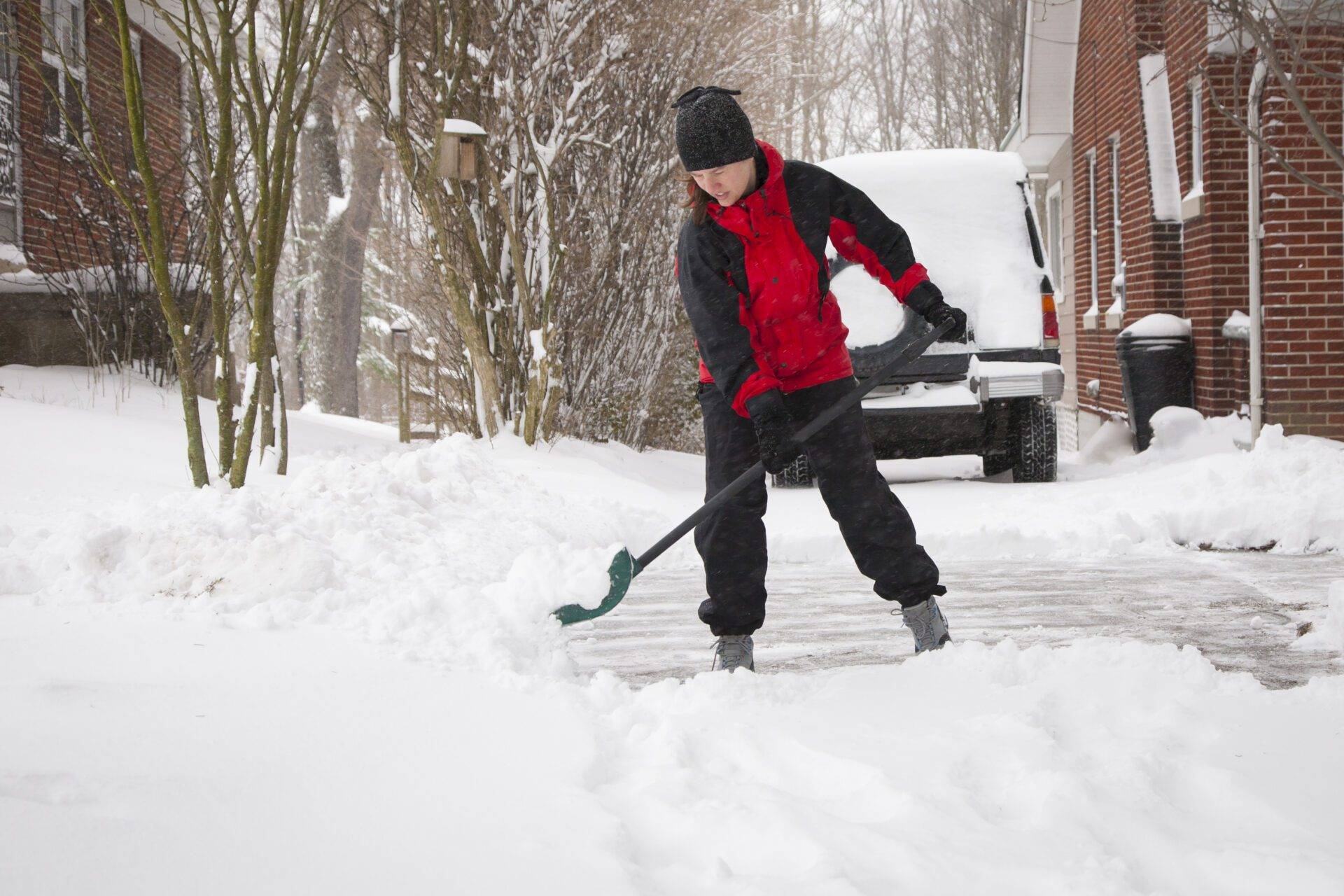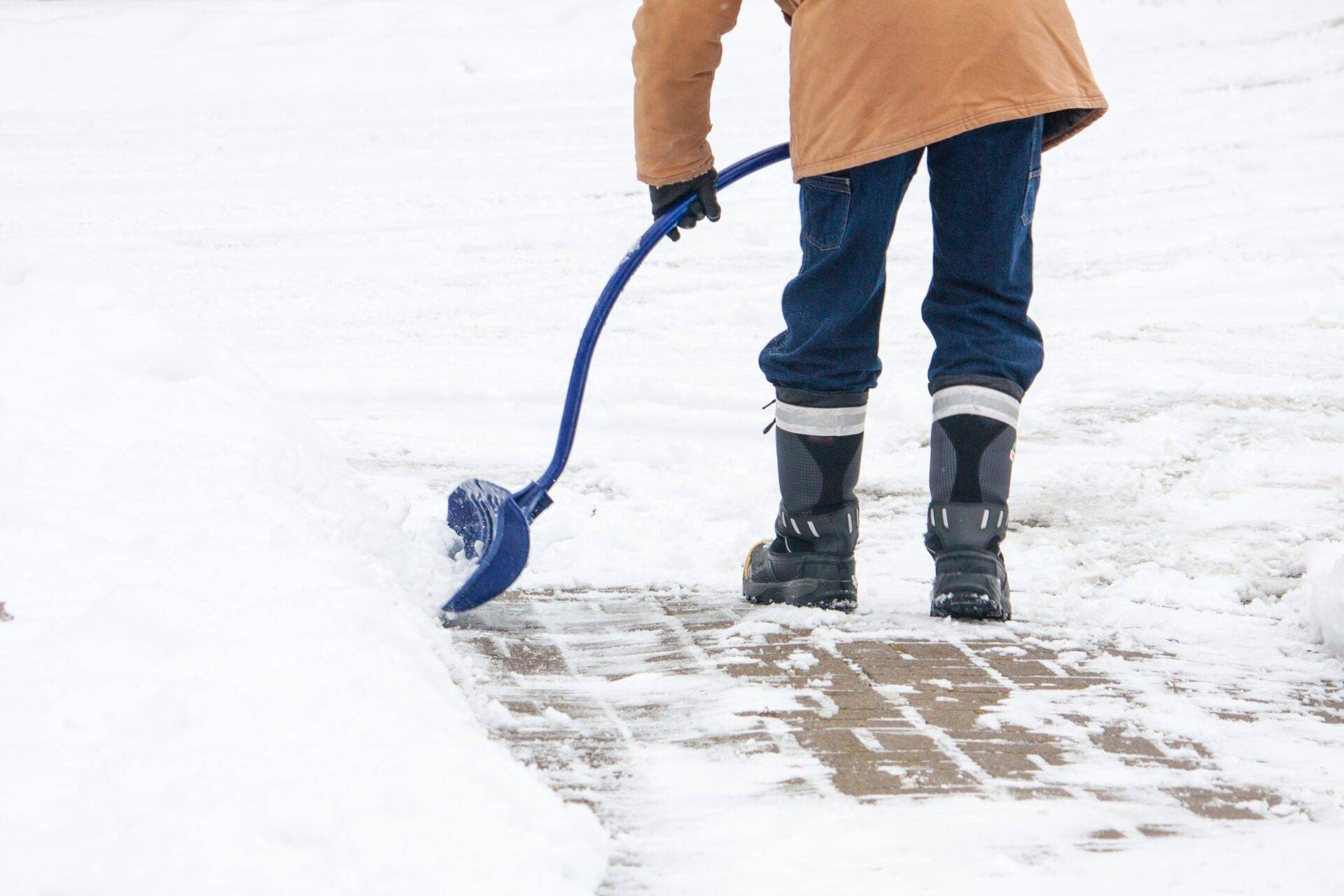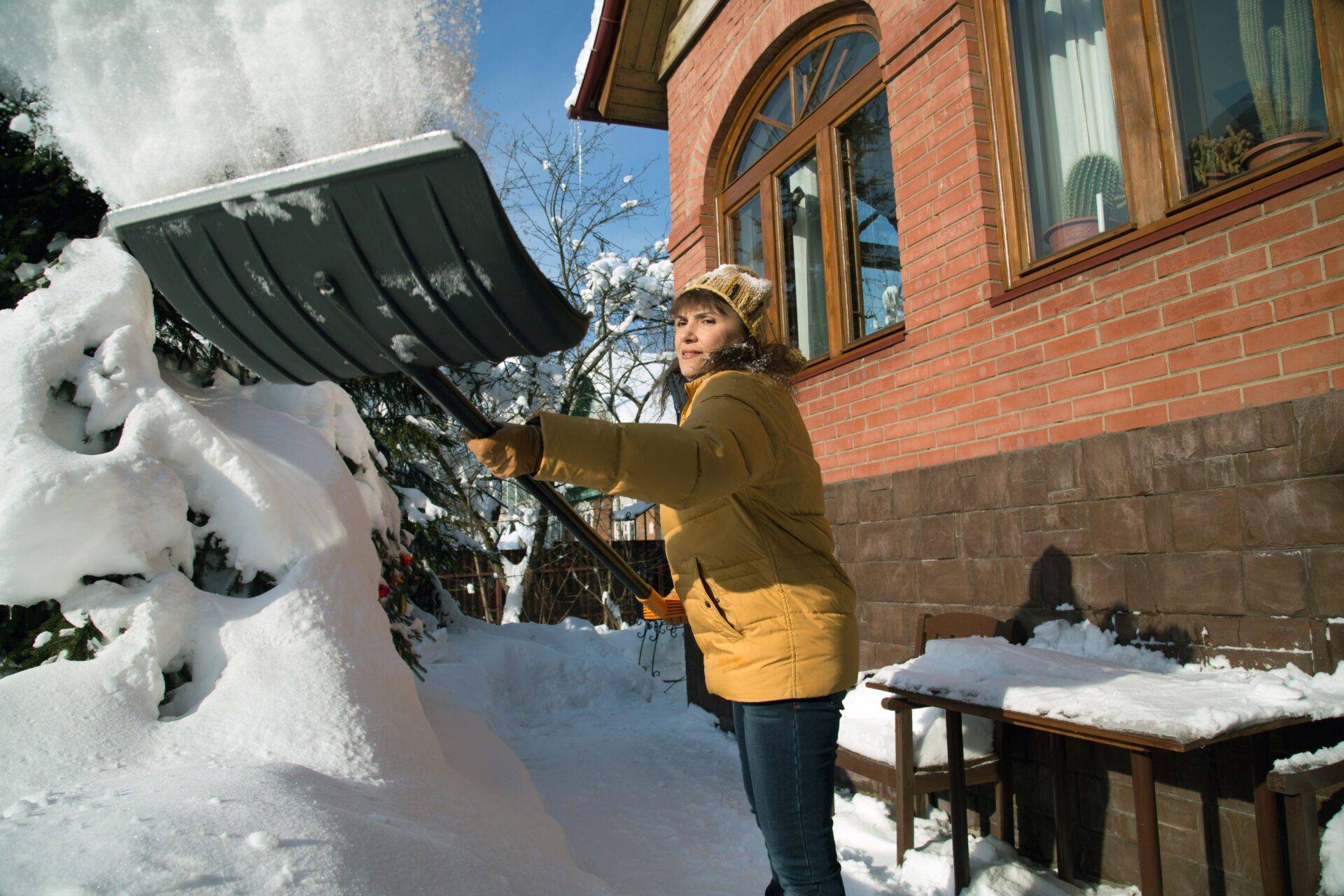By Dr. Jessica Fitzpatrick, DC
Prepare Your Body
The more prepared your body is to take on any physical task, including shoveling, the less likely the risk of injury. Take a few minutes prior to rushing out to shovel to consider these simple steps to help your body prepare to haul some snow around.
Stretching: Large dynamic stretches before you begin help to get the blood flowing and the muscles warmed up. Dynamic stretches involve flowing movements, allowing your limbs to move through their full range of motion without ‘pulling’ on your limbs and holding the stretch for a period of time. Static stretching before your activity poses a slight risk of injury. Therefore, long, static stretches, held for 30 seconds after you’ve finished shoveling will also help eliminate any injuries from the receptivity movements associated with the task.
Drink lots of water: Well-hydrated muscles are less susceptible to injury. It allows them to maintain a normal resting length, prepares them for contraction, and facilitates their ability to provide strength and power for pushing and lifting snow.
Dress Properly: Wear warm, breathable layers of clothing that aren’t stored in a cold garage. Putting on cold clothing prior to going outside can eliminate all the efforts you made to warm up with your dynamic stretching. Select quality snow boots with large, tooth-like grips on the sole to help reduce the risk of slipping on slippery ice. Depending on the conditions, you may want to invest in boot spikes that slip on under your boot for added traction in icy conditions.

Choose the Right Equipment
Having the right shovel for you can go a long way in injury prevention.
- Choose a shovel that is the right size for your height. This will decrease the amount of strain placed on your back by bending over. An ergonomic shovel with a curved handle will also help eliminate the amount of bending required.
- A plastic shovel is much lighter than a metal one. This decreases the overall amount of lifting required especially when considering how heavy all those scoops of snow can be.
- Waxing your shovel can also help the snow slide off the shovel making your task easier

Getting the Job Done
Now that you’re ready to go keep these tips in mind to make the task as easy and injury-free as possible.
- Keep up with the snow. It is better to do a few smaller sessions than try to tackle it all at once. If this is not possible it is very important to take breaks. Set a 20-minute alarm and drink some water. This pacing will help your body handle the task much more than if you were to do it all at once.
- Keep your feet hip-width apart and hold your hands separated on the handle.
- Take smaller amounts of snow and try to push instead of lift/throw whenever possible.
- When you do have to lift, hold the shovel close to your body, lift with your knees, and always face the direction you are aiming to place the snow. When facing the direction of the snow, you avoid twisting and placing any unnecessary forces through the back.
- Remember to keep your core engaged and take big breaths as you work.
- Switch sides whenever possible to balance out the effort.
- Listen to your body. This is perhaps the most important tip of all. If you feel any pain or discomfort stop right away. Apply ice and rest and if the pain does not improve or worsens, it is important to seek treatment as soon as possible.

Even with taking all the necessary measures to help minimize the risk of injury with shoveling, unfortunately, injury is not completely preventable. If you hurt yourself, a safe rule of thumb is to apply ice over the area in intervals on and off. This should be done for at least the first 2-3 days. Light stretching can be implemented within 1-3 days as the intensity of pain settles down. My recommendation, should the pain not show signs of settling down after about 48 hours, is to have the injury diagnosed, treated, and resolved in as quickly a timeframe as possible. Our doctors of chiropractic at Active Approach focus on the specific diagnosis of musculoskeletal injury, meaning injury to muscles, joints, tendons, ligaments, and even nerves. Our initial consultation approach involves a thorough history of your injury onset and your prior health conditions and a careful examination of the injured area involving a range of motion testing, orthopedic testing, and palpation. From there, a concise diagnosis is explained along with the recommended treatment options to help accelerate healing rates and get pain down quickly.
Feel free to read more about our Therapeutic Options on our website to learn how the Active Approach can help you recover quickly, stay healthy, and get back to your active life!

